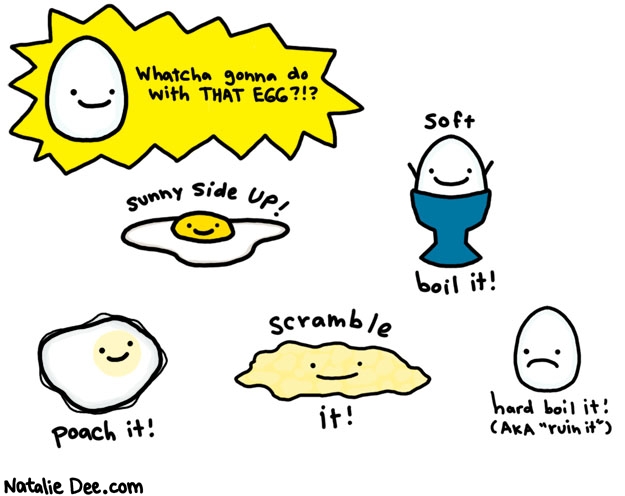If you haven't noticed, I have been writing about eggs a lot lately. They are my absolute favorite food- period. Especially in the winter. I could eat them twice a day. In fact, after I finish writing this I am going to make myself an omelet.
I just wanted to share something with you that I learned recently about how the egg is supposed to look when you crack it out of it's shell. You should know by now if you have been reading my ramblings that I go to a farm to buy meat and eggs. I buy as many eggs as Carla has available, and since I don't get down there as often as I would like, I buy the rest of my eggs organic and pastured if possible.
Look at the difference between one of the farm eggs (bottom) and an organic store-bought egg (top). If you can't notice a difference let me school you:
- the farm egg (bottom) is darker orange in color which means that it is richer in beta-carotene
- the egg white around the farm egg is thick with a defined edge
- majority of the liquid in the bowl came from the organic egg (top)
Here are some things that you cannot see:
- The shell of the farm egg was a lot harder to crack
- I did a poke test to see how easily the yolk would break and the farm egg's yolk was much more resilient to my poke; the organic egg yolk broke almost immediately.
Why is this important? Well, the healthier the animal, the stronger the egg, the healthier the egg is for you. Beta-carotene, which is the pigment responsible for orange foods like carrots, sweet potatoes, and pumpkin, is important because it is a precursor to Vitamin A. Vitamin A is an important vitamin because without it our bodies cannot utilize all of the vitamins and minerals we take in through our food. It works in conjunction with Vitamin D, which is why they fortify dairy with both, however the dairy industry missed the boat and is using the wrong form-Vitamin D2- when we really need Vitamin D3. If you don't know my stance on vitamins read thisA Bitter Pill to Swallow...how vitamins may not actually be healthy.
Bottom line is that this power couple (Vitamins A & D) is responsible for directing where other nutrients are sent in your body. They are like the air traffic controllers. Without them it is a whole big mess.
In addition to the sun (Vitamin D) and fruits & vegetables (Vitamin A), you can also get them in the meat and dairy from animals that have been pasture raised. The animals absorb Vitamin D from the sun and they get Vitamin A from the grass, both end up being stored in their muscle, organs, and milk (and subsequently the milk products). This is one of the reasons why so many cultures (including ours until recently) ate the organ meats of animals. They were very high in Vitamins A & D- although I doubt they knew this. This is how many cultures survive in very cold climates with hardly any exposure to sunlight. They ate animals in their entirety- the liver, the bones in soup, the feet, EVERYTHING! And the animals were either wild or pasture raised. Factory farms didn't exist until very recently.
So. It's winter. I live in New Jersey. I don't get any sun- I usually go tanning a few times a week, but my package ended and I just haven't gotten around to renewing PLUS I want to see if I can fulfill my needs through my diet. Enter eggs, meat, and dairy from pastured animals.
Do you think people used to worry about getting enough vitamins or did they just eat what was abundant in their area?
(Pssst... Nutritionism and all this hype about individual nutrients is an American made thing (scary!). It has never been practiced anywhere else in the world. Cultures around the globe practiced eating whole foods which were indigenous to their area. Over time, they found what worked for them so they could survive and thrive where they lived. I think we need to go back to that- who the hell are we to think that we can design it better than Mother Nature?)



dontgo tanning jess
ReplyDelete